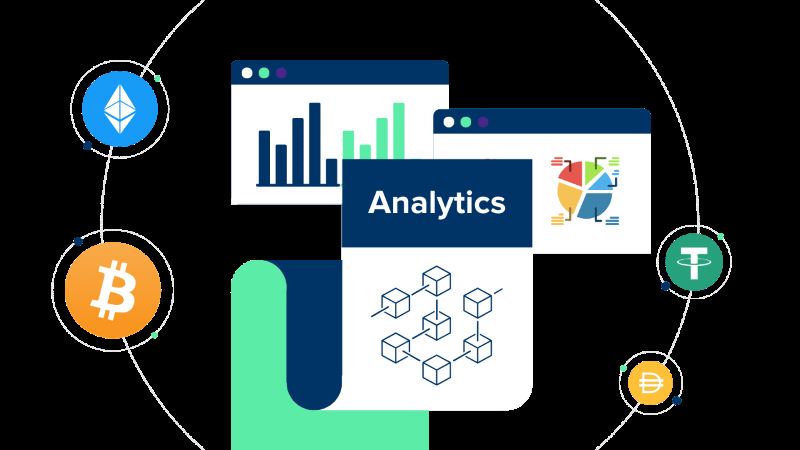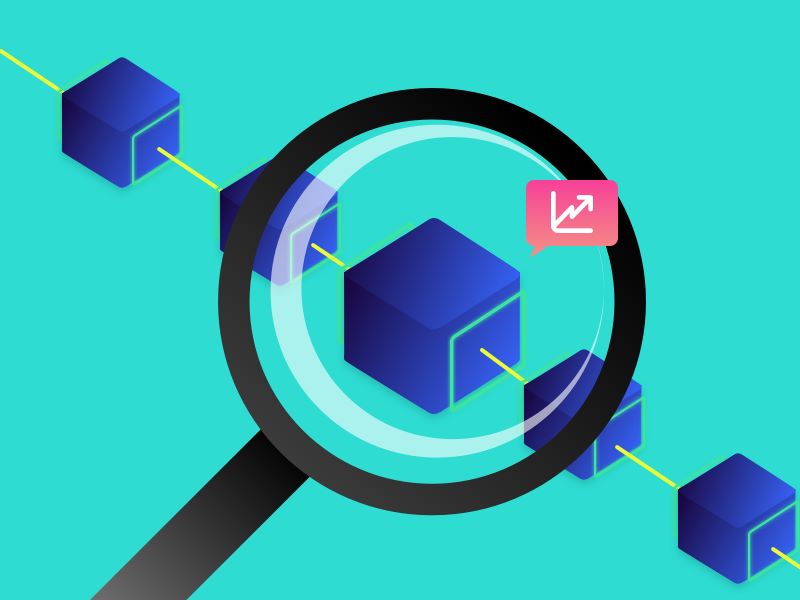Dive into the digital currency world with on-chain data analysis instructions. You’ll crack secret codes of market moves and wallet whispers. Unearth real-time records of who’s buying, who’s selling, and who’s holding. Grasp complex crypto happenings with easy charts and sharp tools. We’ll walk you through from the ABCs of on-chain metrics to the high-IQ play of smart contract scrutiny. Gear up—your pro-level blockchain breakdown starts now!
Getting Started with On-Chain Data Analysis
Understanding the Basics of On-Chain Metrics
Picture this: You’re a detective of the crypto world. Your clues are on-chain metrics. These clues help you spot trends and check the health of cryptocurrencies. Now, why do these matter? They show how a coin is doing, kind of like a doctor’s check-up. Let’s dig in. First off, what is a blockchain? It’s a list of all crypto transactions for everyone to see. On-chain metrics guide us in reading this list. They include the total coins out there, how many deals get done, and the price to move coins (like miner fees).
For instance, tracking wallet transaction history lets us see where the money moves. On-chain volume tracking checks how much is being traded. If lots of coins move, folks might be buying or selling in big waves. Analyzing smart contract activity is cool too. It tells us how apps built on blockchain are doing. It’s not just about counting coins – it’s about seeing the bigger picture.
Selecting the Right Blockchain Analytics Tools
Now you ask, “Great, but how do I do all this?” Well, you need tools. In the old days, you might need a magnifying glass. Today, you need blockchain analytics software. They’re your digital magnifying glass. The cool thing is, there are lots out there. Some are as easy as a Google search!
When you pick a tool, think about what you need. Are you a big business or just curious? Different strokes for different folks! Do you want just the basics, or are you digging deep? You also want tools that are easy to use. No one likes a tool that’s as confusing as a jigsaw puzzle. Keep in mind, some tools are free, but some ask for cash.
Let’s say you want to understand blockchain explorers. They’re like web browsers but for the blockchain. They let you peek at all the transactions. Step by step, these explorers guide you through the data. You type in a wallet address and see its history. It’s like having a book where you can read any page.

Here’s the thing – you don’t want just to look at data; you want to get it. So, you need tools that explain the info in clear words. Sure, data analysis of crypto wallets can feel like you’re learning a new language. But with the right tools, it’s like having a translator.
Summing up, our detective work starts with knowing on-chain metrics. They’re your A-B-Cs of blockchain data. Next, get your hands on the right tools. Pick the ones that fit your detective style. Take your pick smartly, and you’ll be uncovering secrets like a pro. Remember, in this game, your tools and smarts make you the best crypto detective on the block.
Now that you’re getting a hang of it, you’re ready to move on. The next step? Deep diving into transactions and tracking those cryptic crypto trails. Let’s go get ’em, detective!
Deep Diving into Blockchain Transaction Analysis
Interpreting Wallet Transaction Histories and Patterns
Look at wallets to see how folks use their crypto. You can find patterns. Consider wallet activity as a map. It shows where cash moves in time. This knowledge tells us who sends or gets crypto often. We spot big movers, called “whales”. They can sway market prices.
A tool for this task is a blockchain explorer. Think of it as a big archive. All trades made on a chain live here. To make sense of this data, use simple terms. A wallet ‘address’ holds crypto. A ‘transaction’ moves crypto between two places. And ‘blocks’ are packs of these trades.
Knowing these, we find odd wallet action, such as sudden large funds moving. We ask why. Maybe it’s a big sale or a sign of something else. Each move on the blockchain paints a wider picture for us.
Utilizing Crypto Transaction Tracking for Strategic Insights
Tracking trades gives clues for smart choices. It’s like being a detective but for money trails. You watch the flow of tokens. Track where they move. How fast. Even check how much it costs to move them (this is ‘gas’). If you’re sharp, you can seek trends. They guide you on what might happen next.
This info is a must for big decisions. If you’re investing, you want to back a winner. Hard data helps here. It cuts through noise and guesswork. Say a certain token starts buzzing, more people trade it. You’ll see this in your analysis. You can then think, is it hype or is it real?
But remember, blockchain is deep. You could spend all day on this. So focus on what matters. Use on-chain indicators that tell you a lot with little. Watch for big changes in things like trade numbers or wallet sizes. They can hint at shifts in the market. Are people joining or leaving?
You can’t guess the future. Nobody can. Yet, patterns and data give you a start. Widen your view. Look at more than just one token. A good look at the big picture helps a lot. It tells you more than just staring at one piece.
To win in crypto, you must know the game. Learn how trades go through. See what costs to watch. Use tools and data to see beyond obvious moves. This is how you play the game well. It’s not just buying low and selling high. It’s seeing the whole field. Now let’s get back to tracking and find those insights!
Advanced Techniques in Blockchain Data Investigation
Analyzing Smart Contract Interactions and On-Chain Events
When you dive into on-chain metrics, the first thing to master is smart contract activity. Smart contracts are like digital deals that run when certain conditions are met. They can handle money, items, or data, directly on the blockchain. To spot big changes, watch how they interact. This tells us a lot about what’s hot or not in crypto land.

One way to do this is by tracking on-chain events. These are actions recorded on the blockchain. They can be anything from a token being moved to a new rule being added to a contract. When you track these, you keep tabs on what’s happening across the entire crypto network.
Here’s how to start: Find a blockchain explorer and search for a contract or transaction. Look for things like when it happened, who made it, and what came out of it. This may feel like detective work, but once you get the hang of it, you’ll feel like a crypto sleuth!
Exploring On-Chain Volume Tracking and Token Flow Dynamics
Next is the flow of tokens. It’s like watching blood pump through the body, but for crypto. The more activity, the healthier the network. Check out blockchain data sources to see how much crypto is moving around. If a lot of tokens move to one wallet, someone may be stocking up. Or, if a token keeps changing hands, it might be becoming popular.
Volume tracking is counting how much of a token moves in a set time. High numbers can mean a lot of interest in that token. To track this, use analytics tools that show you graphs and charts. They make it easy to see trends over time.
Remember, all this happens on a wild, living network. It can be rough, like a rodeo. But if you keep at it, you’ll start to see patterns, like waves on a beach. And with each wave, you’ll learn more about the power of the crypto tide.
So, it’s all about asking the right questions and knowing where to look. Start with analyzing smart contracts to get the big picture. Then, narrow down to volume and token movement to see the details. Together, they give you a strong grip on the pulse of the blockchain. And that’s how you unlock cryptocurrency insights like a pro.
Applying On-Chain Data to Investment Strategies
Extracting Actionable Insights from On-Chain Behavioral Analytics
Got some crypto coins? Nice! Want to know how to make smart choices with them? Let’s dig in!
First off, you’ve got to get what’s going on in the blockchain. It’s like watching bees in a hive. All the buzz? That’s the on-chain metrics guide helping you. It tells you what the bees are up to. Who’s sending honey, who’s getting it, and how much. It’s about looking at wallet activity and saying, “Aha! That’s what everyone’s doing.” This is gold for making your own moves in the crypto world.
Let’s say you see a wallet that’s just loaded up on coins. That could mean something big is about to pop. Using blockchain transaction analysis, you check out what this wallet has done before. Did it grab coins right before prices went up last time? This could be your tip-off to a hot trade.

You’re probably thinking, “Cool, but how do I start?” Well, it’s all about knowing where the action is and interpreting blockchain data like a pro. It’s not always easy, but you can do it with some practice.
As you dive deeper, you start seeing patterns, like how the flow of tokens gives you clues. Think about a busy mall – lots of folks going in and out tells you it’s a good place, right? Same here. A lot of token action points to a happening spot in the crypto market. That’s on-chain volume tracking for you.
Last up, analyzing smart contract activity can be huge. Contracts are like the rules of the game for coins. See a bunch of these contracts kicking off? Then something big could be cooking in that coin’s kitchen. You want to be there when it serves up.
Recognizing On-Chain Trends and Their Investment Implications
Now for spotting trends – this can make or break your game. You want to catch the next big wave, don’t you? On-chain trend spotting is like being a weatherman for crypto. You’re looking up at the data clouds and telling folks if there’s a storm coming or if it’s all sunny days.
You might notice everyone’s paying more to make transactions – that’s blockchain miner fees studying for you. It’s like paying for faster delivery. Why the rush? This could mean people are betting on something big coming. Or maybe you see block time significance – like how fast blocks are filling up with data. Blocks getting full quick means more action on the network.
Not just that, keeping tabs on hash rate implications is vital too. It shows how much muscle the network has. More muscle means it’s stronger and more folks might trust it. Simple, right?
Understanding events as they happen helps you react fast. By tracking on-chain events, you’re like that buddy who always knows what’s up. You can tell if it’s all talk or if something’s really going down in crypto town.
So, look at those blockchain data sources. Crack open a blockchain analytics tutorial if you need to. Studying this stuff helps you make sense of the crazy world of crypto. Remember, it’s about using what you learn to make choices that count. That coin in your digital pocket? It could be worth a lot more with a little bit of smarts. And that’s what on-chain behavioral analytics can give you – the smarts to ride the crypto waves like a champ.
In this post, we uncovered the ropes of on-chain data analysis. We kicked off with the basics of on-chain metrics, then chose the right tools to dig deeper. We dove into transaction histories and used crypto tracking for sharp insights. Next, we explored smart contracts and the flow of tokens. We ended by linking on-chain data to smart money moves. Now you’ve got the know-how to make on-chain data work for you in investing. Keep at it, and you’ll spot trends that others miss. Stay sharp and invest smart!
Q&A :
What Is On-Chain Data Analysis in Cryptocurrency?
On-chain data analysis refers to the process of examining and interpreting data that is inherently part of the blockchain. It involves scrutinizing transaction data, wallet addresses, and block information to gain insights into cryptocurrency market trends, investor behavior, and network health. By analyzing these immutable records, investors and researchers can make informed decisions and predictions about the market.
How Can On-Chain Data Analysis Provide Investment Insights?
On-Chain data analysis can help investors identify patterns in buying and selling behaviors, track the movements of large (‘whale’) holders, and understand the overall demand for a cryptocurrency. It also assists in observing miner activities such as the total hash rate and the number of unspent transaction outputs (UTXOs). These insights enable investors to spot trends that may not be visible through traditional market analysis tools.
Which Tools Are Required for On-Chain Data Analysis?
To perform on-chain data analysis, individuals usually need access to blockchain explorers and analysis platforms such as Glassnode, Coin Metrics, or Blockchair. These tools provide a graphical interface to explore data directly from the blockchain, often offering advanced features like filtering options, comprehensive charts, and even predictive analytics to facilitate in-depth research and trading strategies.
What Are the Key Metrics to Look at When Conducting On-Chain Data Analysis?
Key metrics in on-chain data analysis include transaction volume, active addresses, fees paid, new address creation rate, hash rate, and the amount of currency held in exchange wallets. Other important indicators are the number of transactions per block, the age of coins being transacted (coin days destroyed), and the entity-adjusted transaction volume which aims to exclude intra-entity transactions for a clearer economic activity picture.
Can On-Chain Data Analysis Predict Cryptocurrency Prices?
While on-chain data analysis provides a wealth of information that can inform investment decisions, predicting cryptocurrency prices solely based on on-chain data is challenging due to the volatile and unpredictable nature of the markets. However, when combined with other analytical methods such as technical or fundamental analysis, it can be an invaluable component of a multidimensional market prediction strategy.
